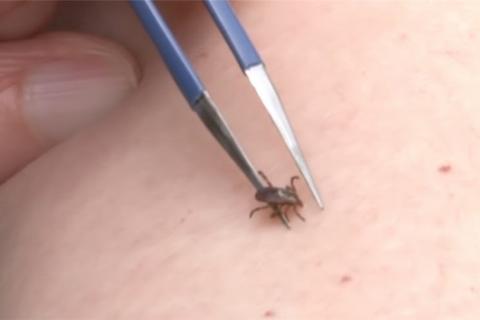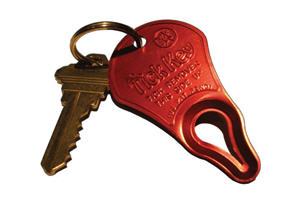
Ticks are a part of nature. If you plan to get outside, chances are you could come in contact with one and even get bit.
According to the Centers for Disease Control and Prevention, ticks are most active April through September. That's right, even the first part of deer season can have you hunting with ticks.

Rocky Mountain spotted fever.
Photo via commons.wikimedia.org.
 Be vigilant during those months and take precautions to avoid contact with ticks, if possible, and repel them with DEET or Permethrin.
Be vigilant during those months and take precautions to avoid contact with ticks, if possible, and repel them with DEET or Permethrin.
If prevention fails, and you find a tick still embedded in your skin, then follow these steps from the CDC to remove it:
Check out this video on How to properly remove a tick
How to Remove a Tick
 1. Use fine-tipped tweezers to grasp the tick as close to the head (in the skin) as possible.
1. Use fine-tipped tweezers to grasp the tick as close to the head (in the skin) as possible.

2. Pull up with steady, even pressure. Don't twist or jerk the tick, as you don't want to leave any tick mouth parts in the skin. (If it does happen, then remove the parts with the tweezers.)
3. After you remove it, clean the bite area and your hands with rubbing alcohol, an iodine scrub or just plain soap and water.
Tip: Remove ticks safely and easily at home, at the campsite, or wherever you run into the annoying pests with The Tick Key Tick Removal. This easy-to-use tick removal device uses natural forward leverage to remove the entire tick, head and all, quickly and safely.
 4. Dispose the tick in by submersing it in alcohol (the rubbing kind) and flush it down the toilet. (You can also place it in a sealed bag or container and freeze it in case you need to provide it to a medical practitioner if you start having symptoms of a tick borne disease.)
4. Dispose the tick in by submersing it in alcohol (the rubbing kind) and flush it down the toilet. (You can also place it in a sealed bag or container and freeze it in case you need to provide it to a medical practitioner if you start having symptoms of a tick borne disease.)
How Not to Remove a Tick
- Don't crush a tick with your finger;
- Don't "paint" the tick with nail polish or petroleum jelly; and
- Don't use heat to make the tick detach from your skin - remove it as soon as possible.
Also Read: What You Should Know About Ticks and Lyme Disease
What to Watch for After Removing the Tick
There are differing signs and symptoms of tick borne diseases. Watch the bite area for rashes in the following weeks after removal. If you develop a rash or a fever, see your doctor. And if you saved that tick, take it with you.
Tip: Shop insect repellents and insect fighting gear at Bass Pro Shops here
How to properly remove a tick video
by Kateryn Rochon, Ph.D., Assistant Professor - Veterinary Entomology, University of Manitoba.
Watch Tips to best remove a tick
- 241394 views

